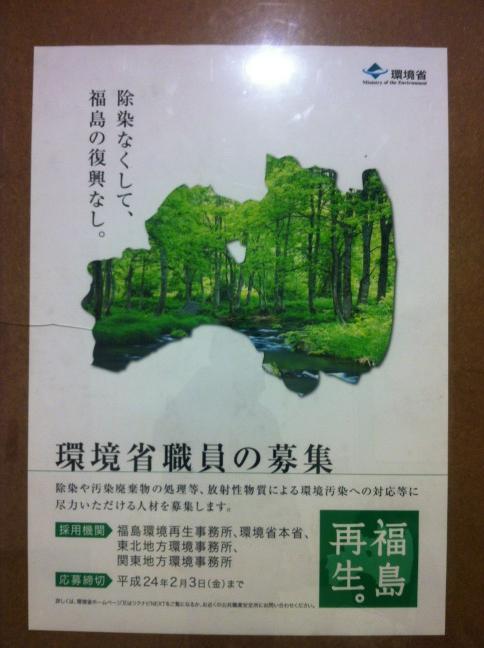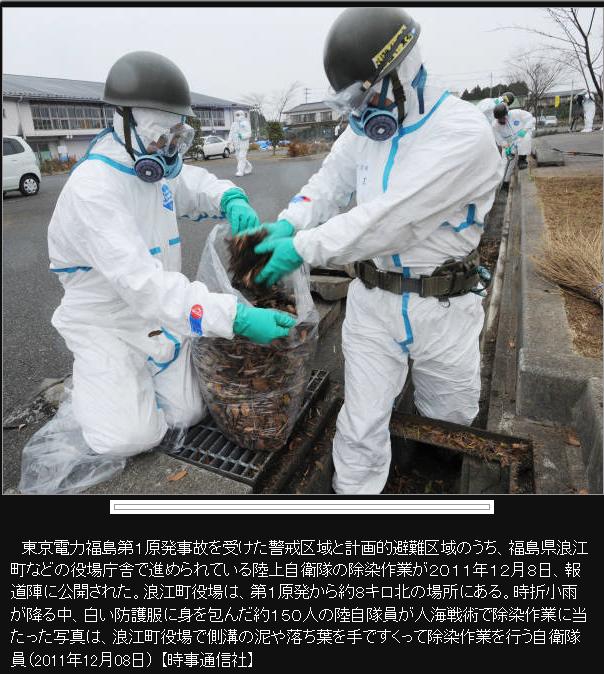– “Decontamination” Defined by Ministry of the Environment Is Nothing But a General, Thorough Cleaning by Hand (EX-SKF, Jan. 26, 2012):
according to Sankei Shinbun, who has been unabashedly pro-nuclear energy and in favor of dispersing radioactive materials throughout Japan via the disaster debris to share in the “pain”.
The paper has an article about the meeting between the Ministry of the Education officials and the heads of the municipalities within the 20-kilometer radius “no entry zone” where the heads of the municipalities received the information from the Ministry about their lot – whether they can return after the decontamination work by the national government or not.
But that isn’t the interesting part of the article.
At the end of the article, there is a separate section that the newspaper writes about what “decontamination” is, according to the Ministry of the Education:
?? ??????????????????????????????????????????????????? ???????????????????????????????????????????????????????????????????????? ???????????????????????????????????????????????????????????????????????? ??????????????????????????????
Decontamination: “It is like a cleaning job of stubborn dirt or stains” (Ministry of the Environment senior officials). Basically, it relies on manpower, using hand tools like shovels and scrubbing-brushes. According to the guideline published at the end of last year by the Ministry of the Environment, what can be easily removed, such as dead leaves, is to be removed by hand. The roofs are to be washed down by high-pressure washers, and the concrete surface such as the entrance of a house is to be scrubbed by scrubbing-brushes and deck brushes. As for the grassland and the soil where radioactive materials have penetrated, the surface is to be removed using shovels or diggers. Workers must pay attention not to get exposed to radioactivity by wearing the protective gear.
It looks as long as you follow these procedures the Ministry will call it “decontamination” and the job is done by the book. The subcontractors get paid by the general contractors, who get paid by the Ministry.
If you believed what Goshi Hosono, Minister of the Environment, said about decontaminating Fukushima – “Japan is not the Soviet Union, we have advanced technology to deal with radiation contamination, and we can do what others may have failed”, sorry. There is nothing high-tech about any of these methods, and they don’t even work.
Read more‘Decontamination’ Defined By Ministry Of The Environment Is Nothing But A General, Thorough Cleaning by Hand

